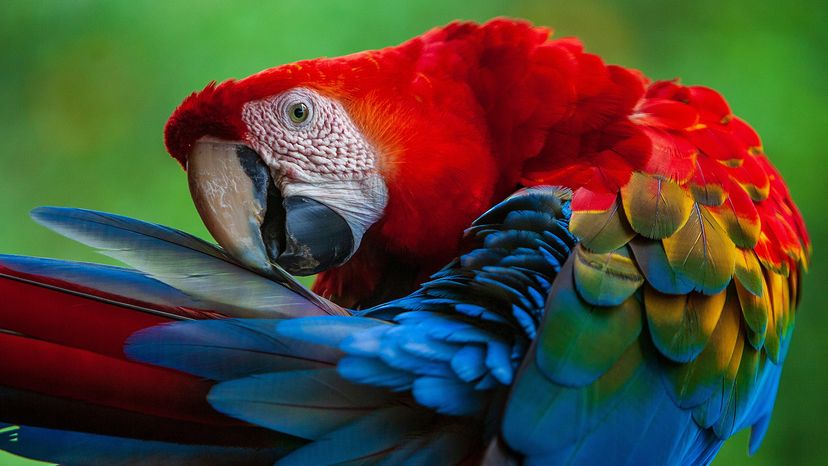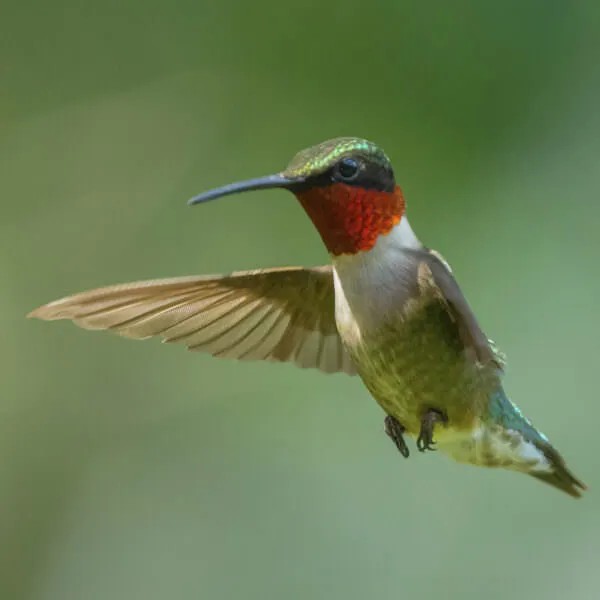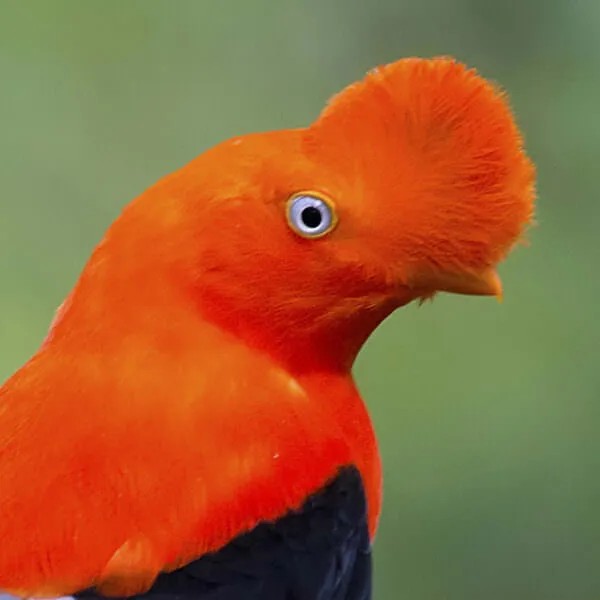10 Most Beautiful Birds That Look Too Cool to Be Real

Some birds look like they flew straight out of a crayon box. With bold colors, long tail feathers, and shimmering plumes, they put even the most flamboyant fashion shows to shame.
The 10 most beautiful birds that look almost too cool to be real are a mix of exotic color, unbelievable plumage, and dazzling patterns—all of which truly amaze anyone who sees them���.
Stunning Birds ListResplendent Quetzal: Famous for its vivid green and red plumage and exceptional long tail feathers, this Central American bird is a symbol of freedom and beauty�.
Rainbow Lorikeet: With a palette including deep blue, bright orange, green, and yellow, this energetic parrot is nature’s living rainbow��.Paradise Tanager: Native to the rainforests of South America, its turquoise-blue, green, and fiery red coloring seems painted on�.Painted Bunting: Known for its striking blend of blue, red, and green, it looks almost unreal perched in the American South�.Golden Pheasant: The male sports a shimmering golden-yellow crest, vibrant red and orange body, and a grand striped tail—an avian king of the forest���.Indian Peafowl (Peacock): Decked out with iridescent blue and green feathers and an iconic tail fan boasting “eye” patterns, peacocks are universally admired�.Victoria Crowned Pigeon: Resembling royalty, these huge blue pigeons display fancy crests and soft purple plumage—native only to New Guinea�.Kingfisher: Several species, but all are noted for electric blue and orange or red hues, and are dynamite when seen darting over water��.Keel-billed Toucan: With a multi-colored beak rivaling a paintbrush and glossy black and yellow plumage, it’s the rainforest’s showstopper���.Gouldian Finch: This Australian bird can have any mix of green, yellow, blue, red, orange, and purple, appearing as if designed by an artist��.Noteworthy FeaturesMany of these birds are admired not just for their looks but also their roles as seed dispersers, pollinators, or environmental indicators in diverse ecosystems�.Their dazzling appearances can serve as camouflage, attract mates, or warn rivals, showing nature’s inventive side�.These birds remind one of how surprisingly artistic and magnificent the natural world can be���.
Rainbow Lorikeet Draped in dazzling blue, green, red, and yellow, the Rainbow Lorikeet looks like a flying rainbow and is as lively as it is colorful
🦜 Rainbow Lorikeet: Nature’s Flying Kaleidoscope
- Appearance: With feathers splashed in electric blue, emerald green, fiery red, and sunny yellow, the Rainbow Lorikeet looks like it flew straight out of a painter’s palette.
- Personality: These birds are energetic, playful, and highly social. Their curious nature makes them frequent visitors to gardens and feeders.
- Habitat: Native to Australia, they thrive in coastal regions, woodlands, and urban areas where flowering trees are abundant.
- Diet: They feed primarily on nectar and pollen, using their specialized brush-tipped tongues to lap up sweet liquids from flowers.
- Sounds: Their calls are loud and chattery—often described as cheerful squawks and whistles that add life to the treetops.
Paradise TanagerIts electric blue, green, and red feathers make the Paradise Tanager stand out in the rainforests of South America
Paradise Tanager: A Living Gem of the Amazon
- Appearance: With a turquoise-blue body, lime-green back, and a splash of red on its rump, this bird looks like it was hand-painted by nature’s finest artist.
- Habitat: Found in the lush rainforests of South America, especially in the Amazon Basin, where its colors pop against the deep green foliage.
- Behavior: These tanagers are social and often seen in mixed-species flocks, flitting through the treetops in search of fruit and insects.
- Diet: Primarily frugivorous, they feast on berries and small fruits, but also enjoy the occasional insect snack.
- Voice: Their calls are soft and high-pitched, adding a gentle soundtrack to the vibrant rainforest.
KingfisherNotably the Common Kingfisher, with its iridescent blue and orange plumage, and sharp fishing skills, is a jewel along the world’s rivers�.
Common Kingfisher: The River’s Shimmering Hunter
- Appearance: Cloaked in brilliant sapphire-blue and fiery orange, the Common Kingfisher glitters like a gem in motion. Its compact body and long, dagger-like bill make it instantly recognizable.
- Habitat: Found across Europe, Asia, and North Africa, it prefers clear, slow-moving rivers, streams, and lakes with plenty of perches and fish.
- Fishing Skills: A master angler, it perches silently before plunging headfirst into the water to snatch fish with pinpoint accuracy. It swallows prey head-first to avoid spines.
- Behavior: Solitary and territorial, it defends its stretch of river fiercely. Despite its vivid colors, it can be surprisingly hard to spot due to its swift flight and quiet demeanor.
- Breeding: Nests are dug into riverbanks—tunnels that end in a chamber where the female lays her eggs.
Golden Pheasant: The Emperor of Plumage
This “flame of the forest” is famous for its golden crest, vibrant red and yellow body, and elegantly cascading tail
- Appearance: Males are a spectacle of color—flaming golden crest, scarlet breast, deep blue wings, and a long, finely patterned tail. Their cape-like orange and black ruff fans out during courtship, resembling a royal mantle.
- Habitat: Native to the mountainous forests of western China, though they’ve been introduced to other regions like the UK, where they roam in the wild.
- Behavior: Despite their flamboyant looks, Golden Pheasants are surprisingly shy and elusive, preferring dense undergrowth where they forage for seeds, berries, and insects.
- Courtship: Males perform dramatic displays, flaring their ruff and strutting to impress females—an avian fashion show in the forest.
- Symbolism: In Chinese culture, they’re often associated with prosperity, good fortune, and imperial elegance.
Indian Peafowl (Peacock)An iconic bird, the Indian Peafowl’s metallic blue and green plumage and extravagant tail feathers with iridescent “eyes” are world famous
Indian Peafowl: The Crown Jewel of the Forest
- Appearance: Males boast shimmering metallic blue necks and chests, with a fan of tail feathers adorned with iridescent “eyes” that dazzle in sunlight. Females (peahens) are more subdued in color but equally graceful.
- Courtship Display: The male’s train—actually elongated upper tail coverts—is fanned out in a hypnotic semicircle during mating rituals, accompanied by rhythmic shivering and calls to attract mates.
- Habitat: Native to the Indian subcontinent, they thrive in forests, grasslands, and even near human settlements. They’re often seen strutting through temple grounds and palace gardens.
- Diet: Omnivorous, feeding on seeds, insects, fruits, and small reptiles. Their foraging helps control pests in agricultural areas.
- Cultural Significance: Revered in Indian mythology and art, the peacock is the national bird of India and associated with deities like Saraswati and Kartikeya.
Gouldian Finch Native to Australia, the Gouldian Finch is extremely colorful, coming in multiple face color morphs on a base of green, blue, yellow, and black.
Gouldian Finch: Australia’s Rainbow in Feathers
- Appearance: These finches flaunt a kaleidoscope of colors—lime green backs, violet chests, yellow bellies, and faces that can be red, black, or yellow depending on the morph. Each bird looks like a unique brushstroke of nature’s creativity.
- Habitat: Native to northern Australia, they prefer open woodlands and grassy savannas, often nesting in tree hollows near water sources.
- Behavior: Social and gentle, they live in flocks and communicate with soft chirps. Their vibrant plumage plays a role in mate selection and social hierarchy.
- Diet: Primarily seed-eaters, especially grass seeds, but they’ll also snack on insects during breeding season for extra protein.
- Conservation: Once endangered due to habitat loss and trapping, conservation efforts have helped stabilize some populations, though they remain vulnerable in the wild.
Resplendent Quetzal
🌿 Resplendent Quetzal: The Emerald Spirit of the Cloud Forest
- Appearance: Males are adorned with shimmering emerald green plumage, a crimson breast, and a flowing tail that can reach over two feet long—like a living ribbon gliding through the mist. Females are less flamboyant but still beautifully green with subtle red tones.
- Habitat: Found in the cloud forests of Central America, especially in Guatemala and Costa Rica, where they nest in decaying trees and thrive in cool, humid elevations.
- Diet: Primarily frugivorous, with a special fondness for wild avocados. They swallow the fruit whole and later regurgitate the pit, helping to disperse seeds and sustain the forest.
- Behavior: Solitary and elusive, they’re most active during the breeding season when males perform aerial displays to attract mates.
- Cultural Significance: Sacred to ancient Mesoamerican civilizations, the quetzal was a symbol of freedom and divinity. Its feathers were prized by Aztec and Maya royalty, and it remains Guatemala’s national bird—featured on its flag and currency.
Keel-billed ToucanIts oversized bill in hues of green, orange, blue, and red gives the Keel-billed Toucan a cartoonish, almost surreal appearance
The statement accurately describes the Keel-billed Toucan’s iconic and colorful bill, which features green, orange, blue, and red hues, creating a distinctive, almost cartoonish appearance. This prominent bill, accounting for about one-third of the bird’s total length, is surprisingly lightweight due to its hollow-bone structure and protein-based keratin covering. Its main body is black, contrasted by a yellow neck and chest, and it has red feathers at the base of its tail, further contributing to its vibrant, recognizable look.
The Keel-billed Toucan is also known as Sulfur-breasted Toucan OR Rainbow-billed Toucan. It is a colorful Latin American member of the toucan family. It is the national bird of Belize.
Including its bill, the Keel-billed Toucans length is 55 cm. Their large and colorful bill is around 15 cm, about one-third of its length. While the bill seems large and cumbersome, it is in fact a spongy, hollow bone covered in keratin, a very light and hard protein.
The plumage of the Keel-billed Toucan is mainly black with a yellow neck and chest. Molting occurs once per year. It has blue feet and red feathers at the tip of its tail. The bill is mainly green with a red tip and orange sides.
Keel-billed Toucans have feet with toes facing in different directions. In the case of the Keel Billed Toucan, it has two toes facing forward and two facing back. Because the Toucans spend a large portion of time in the trees, this helps for the birds to stay on the branches of the trees and hop from one to another.
Appearance and Bill Characteristics
- Colors:The large bill is primarily green, with an orange “body” running along its length, a red tip, and splashes of blue markings.
Anatomy
Best known for its oversized bill, the keel-billed toucan is a large and colorful bird with black plumage, a bright yellow throat and cheeks, vibrant red feathers under its tail and a yellow-green face. Its light green, banana-shaped bill is splashed with orange and tipped with red and blue, and can grow to be a third of the size of the toucan’s 20-inch body. Though cumbersome looking, the bill is actually quite light because it is made of protein and supported by hollow bones. The toucan’s very broad wings, however, are heavy and make flight laborious.
Habitat
These unique birds are found in tropical and sub-tropical rainforests from southern Mexico to Venezuela and Colombia. The keel-billed toucan is crepuscular, meaning that it is most active during dawn and dusk. It lives in groups of six to twelve birds and rarely flies long distances because of its heavy wings—it is, however, quite agile hopping from branch to branch. The monogamous pairs make their nests in natural or wood-pecker created tree holes, taking turns incubating their eggs.
Diet
Keel-billed toucans feed mostly on fruits but are also known to eat insects, lizards, tree frogs and even eggs. They consume their food by grasping it with their bill and quickly flipping it up into the air and catching it in their mouths. They swallow their fruit whole and will regurgitate the larger seeds while the smaller ones pass through their digestive systems. This method means that toucans play an important role in the reproduction of the fruit trees they depend on. These beautiful birds are almost always seen feeding on fruits high up in the canopy; however, they will occasionally fly down to feed from the shrubs, or catch a lizard from the undergrowth.
Threats
The species is not currently listed as endangered, but it is threatened by human activity. Habitat loss is a constant menace to the species’ populations. They are sometimes still hunted for their meat and ornamental feathers. At one time, they were very popular in the pet trade but it has since been revealed that their poor disposition actually makes them bad pets. They’re valuable to Belize — where they are the national bird — bringing tourists who hope to catch a glimpse of their stunning plumage.
- Size: The bill is large and oversized, making up about one-third of the toucan’s total length.


A keel-billed toucan’s bill is made of a light, hollow bone structure covered in keratin, the same hard protein that makes up human fingernails. The keratin forms overlapping layers like tiles or scales, and the internal bone structure is a spongy, cellular foam.
Composition of the Toucan Bill
- Outer Layer (Rhamphotheca): A thin, strong shell of keratin, arranged in overlapping scales, provides the bill’s surface.
- Inner Structure: Beneath the keratin shell is a lightweight, spongy core of bone, supported by fibrous collagen structures and filled with air spaces.
Why This Structure is Ideal
- Lightweight: The combination of keratin and a hollow, cellular bone interior makes the bill surprisingly light, despite its large size.
- Strength: The layered keratin shell and internal bone support give the bill structural integrity to withstand daily use.
- Versatility: This structure allows the toucan to reach for fruit, balance on branches, and even potentially regulate its body temperature.